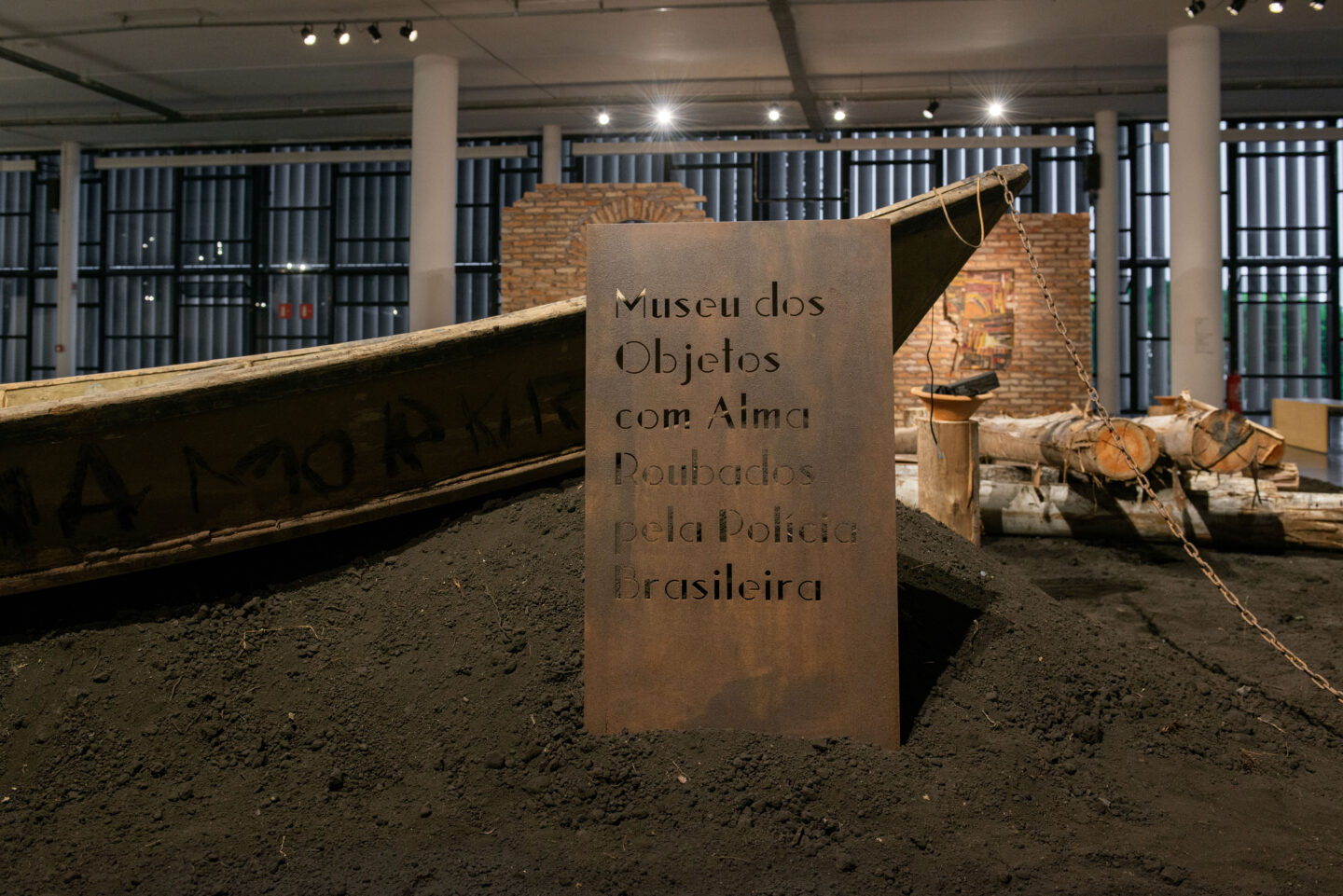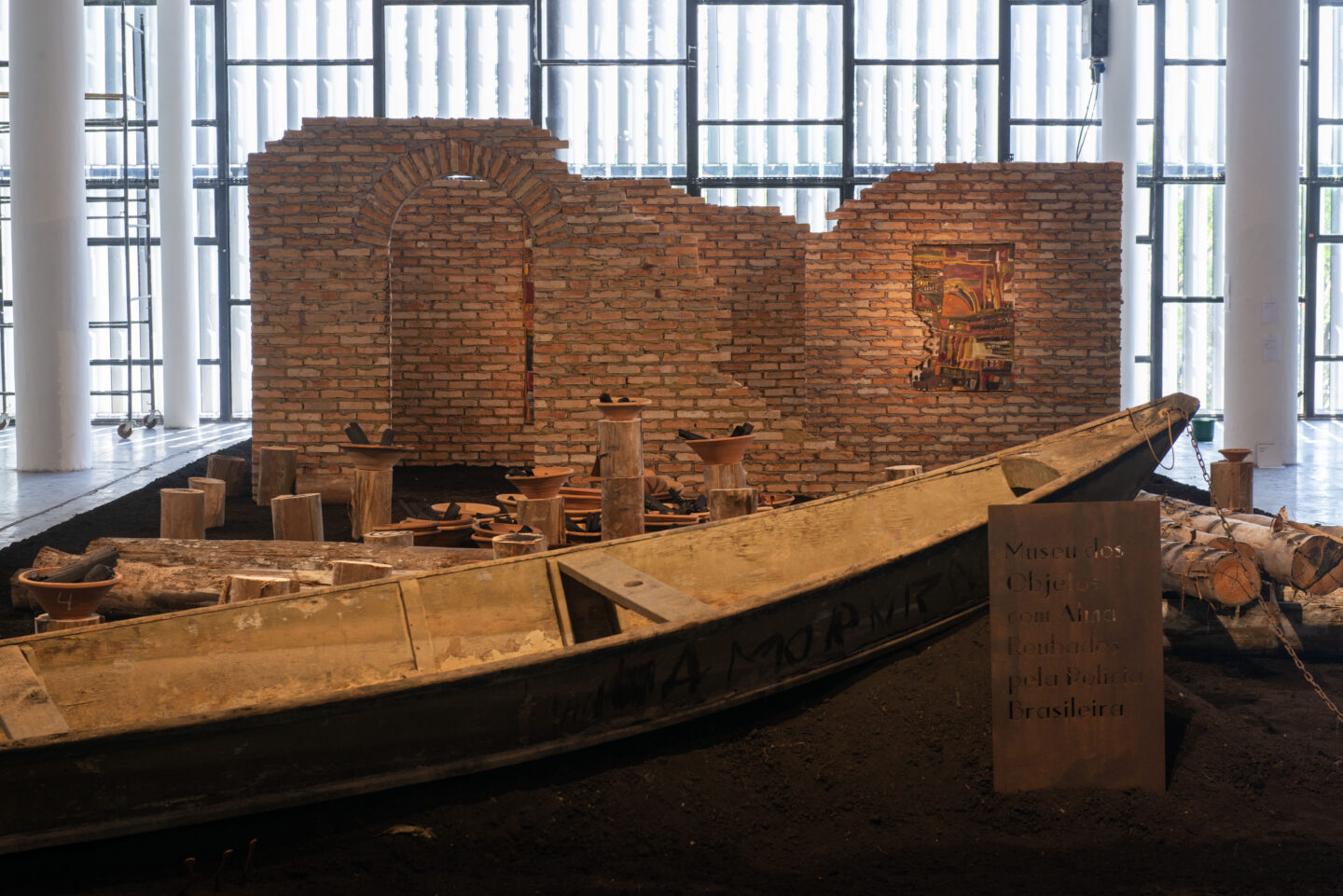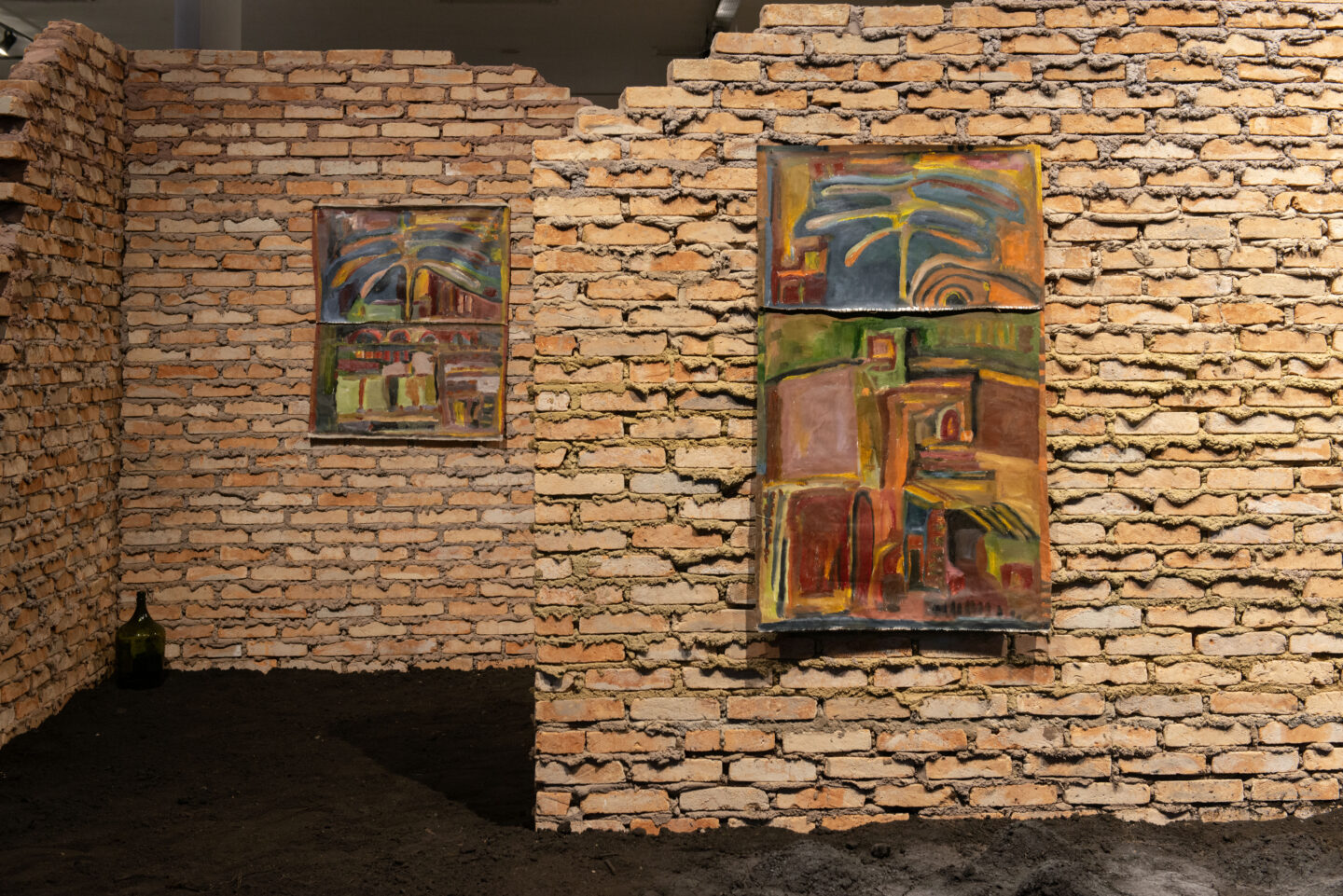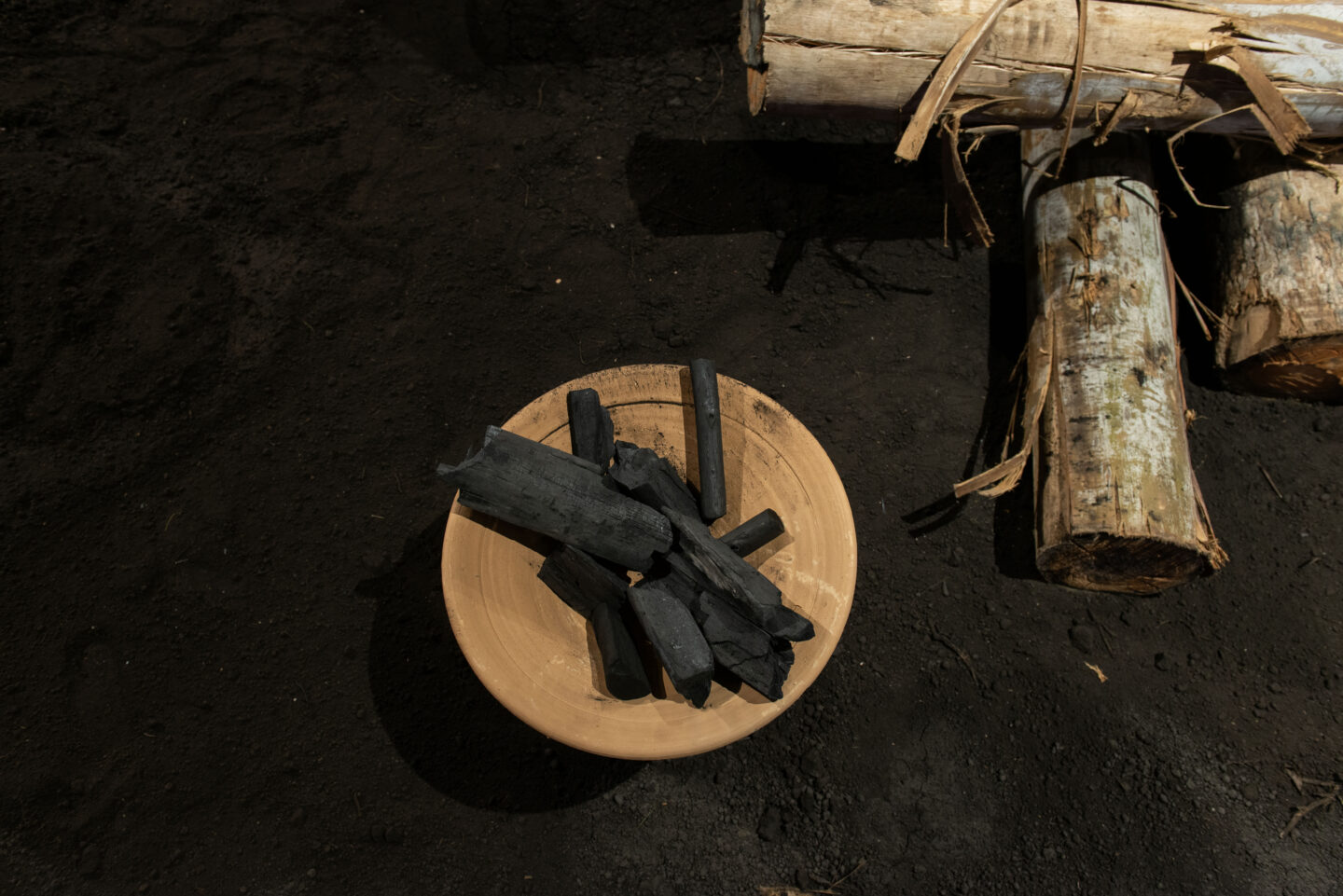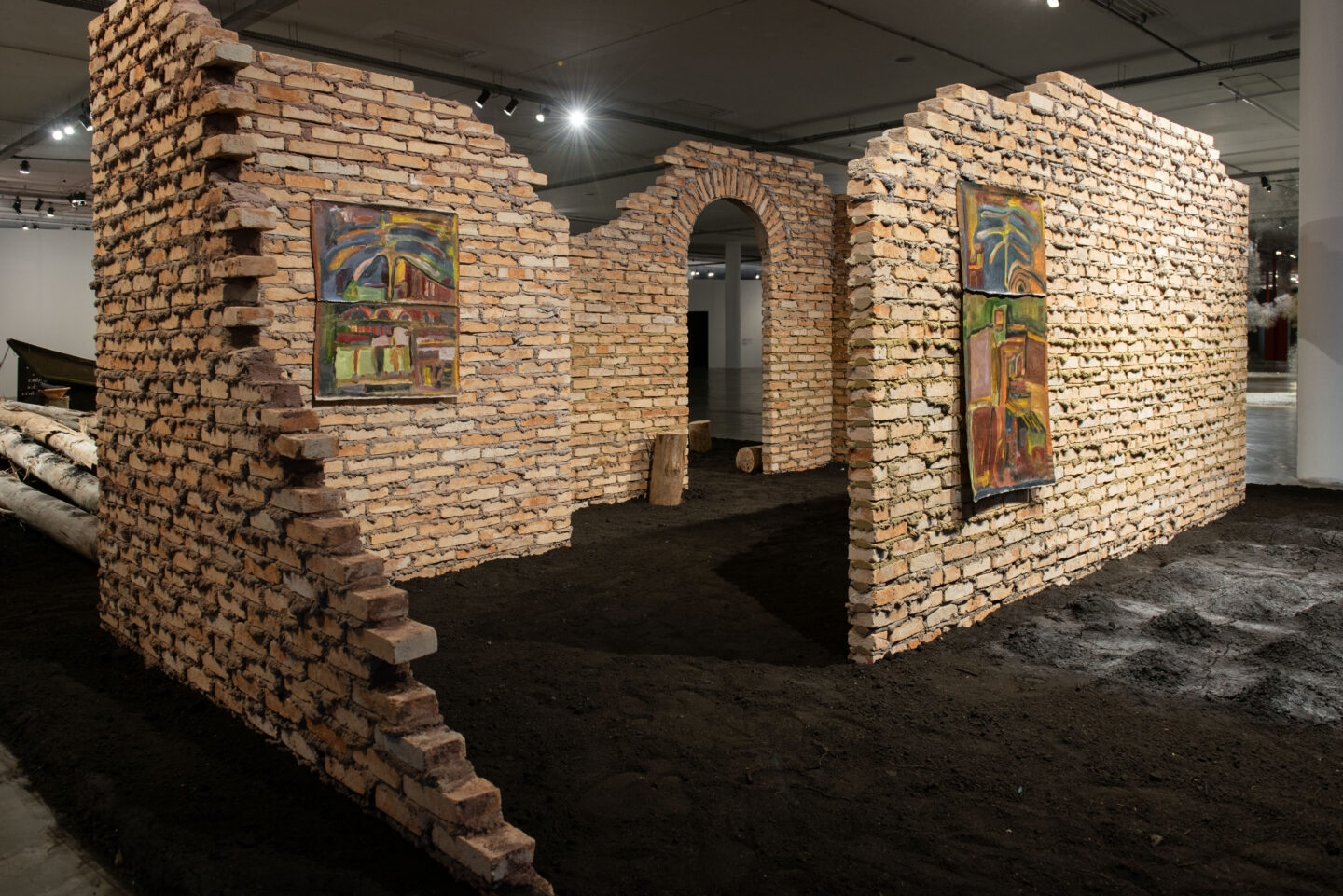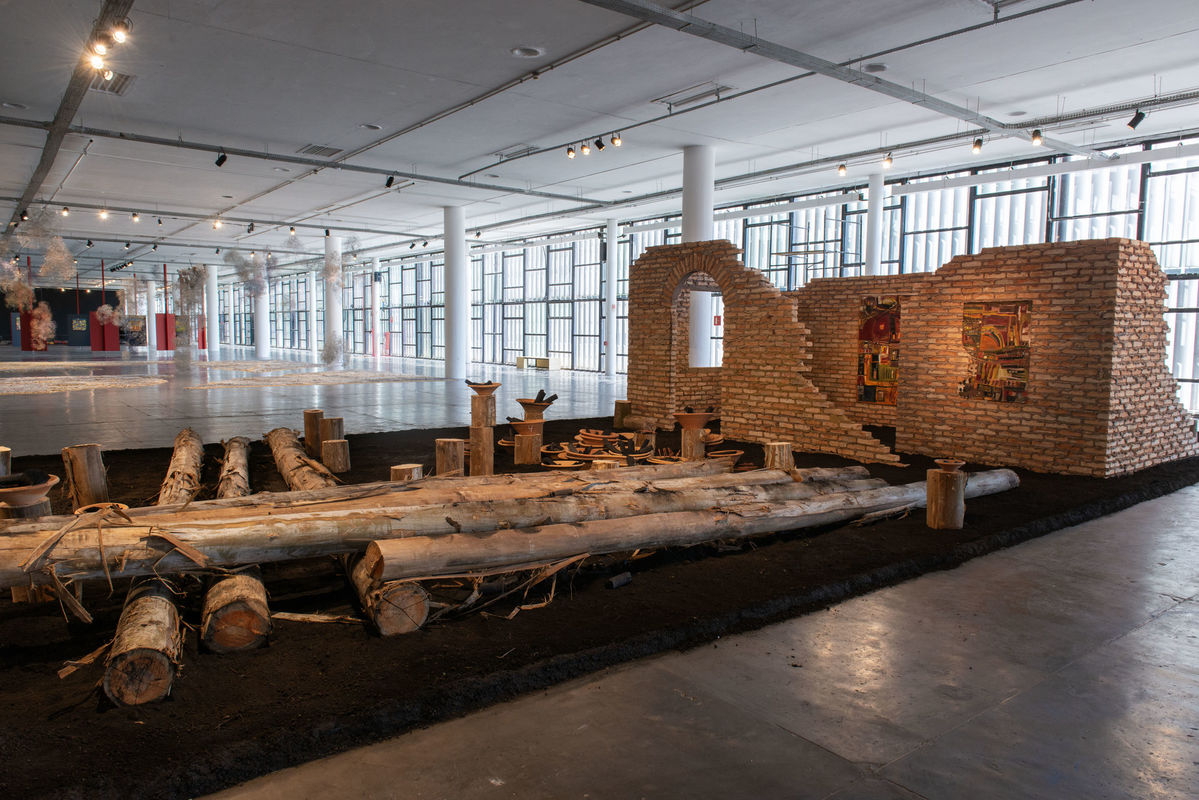
Castiel Vitorino Brasileiro
What good is the insistence on pursuing the bankruptcy of black-ness? What guarantee of belonging to humanity can be put to waste? Castiel Vitorino Brasileiro’s work confronts the most well-established of modern-colonial fictions, race, tensing it as a tool that hierarchizes life on Earth.
Questions about the condition of de/humanity of racialized life, in general, are elaborated according to the repertoire of what the artist defines as modernity’s mythology about race. Studying the impli- cations of the racial mechanism, Brasileiro transmutes the meanings of the presence of dark corporeities based on the Bantu repertoire and on religiosities of African origin.
I thus highlight the torsion of the concept of freedom that, released from the modern-colonial conception of self-determination, is experienced in the condition of impermanence. In the book Quando o Sol não mais aqui brilhar: a falência da negritude [When the Sun No Longer Shines Here: The Bankruptcy of Blackness] (2023), as well as in Montando a história da vida – Museu fictício dos objetos roubados pela polícia [Assembling the Story of Life – Fictitious Museum of Objects Stolen by the Police] (2023), freedom also emerges as a radical practice of interspecific intimacy, grounded in the indistinction of what we consider biotic and abiotic.
The ethical interventions demanded by Black and Indigenous arts are activated by the summoning of the memory and soul of the elements that compose the installation space. There is also an architectural thrust, present in Quarto de cura [Healing Room] (2018–22), questioning the forms of inhabiting the planet.
The ruined museum makes apparent the connection between biology and art history, and in the name of the work Castiel reminds us that the police is the one exe- cuting “the scene in which the psychophysiological differences attributed to dark bodies justify the modern narrative of racial superiority”. The murders of these bodies are performed as confirmation that there are types of people – a lie sustained by the privilege of the anthropological gaze that grounds the iconography of the arts and fuels the imaginary about the other-of-human, dictating who can and should be annihilated. As such, the work announces the end of the racial mechanism as a possibility of living infinitely.
cíntia guedes
translated from Portuguese by Philip Somervell
- Installation view of Castiel Vitorino Brasileiro’s work Montando a história da vida [Manufacturing the History of Life] during the 35th Bienal de São Paulo – choreographies of the impossible © Levi Fanan / Fundação Bienal de São Paulo
- Installation view of Castiel Vitorino Brasileiro’s work Montando a história da vida [Manufacturing the History of Life] during the 35th Bienal de São Paulo – choreographies of the impossible © Levi Fanan / Fundação Bienal de São Paulo
- View of Castiel Vitorino Brasileiro’s work Untitled, from the Edificações [Buildings] series during the 35th Bienal de São Paulo – choreographies of the impossible © Levi Fanan / Fundação Bienal de São Paulo
- Installation view of Castiel Vitorino Brasileiro’s work Montando a história da vida [Manufacturing the History of Life] during the 35th Bienal de São Paulo – choreographies of the impossible © Levi Fanan / Fundação Bienal de São Paulo
- View of Castiel Vitorino Brasileiro’s work Untitled, from the Edificações [Buildings] series during the 35th Bienal de São Paulo – choreographies of the impossible © Levi Fanan / Fundação Bienal de São Paulo
- View of Castiel Vitorino Brasileiro’s works Passagens secretas [Secret Passages] and Untitled, from the Direito ao fogo [Right to the Fire] series during the 35th Bienal de São Paulo – choreographies of the impossible © Levi Fanan / Fundação Bienal de São Paulo
Castiel Vitorino Brasileiro (Vitória, ES, Brazil, 1996. Lives between São Paulo and Vitória, Brazil) studies transmutation and the means of transit between life and death. In addition to being an artist, writer, and clinical psychologist, her works span performance, video, photography, and installation, dealing with healing, encounter, macumba and the psycho-spiritual dimension. She wrote the book Quando o sol aqui não mais brilhar: a falência da negritude (2022). Her works have been exhibited at collective exhibitions such as in the Pinacoteca de São Paulo (Brazil), Frestas Trienal de Artes 2020/21 (Sorocaba, SP, Brazil), Kunsthalle Wien (Vienna, Austria), 11th Berlin Biennale (Germany) and Valongo Festival Internacional da Imagem (Santos, SP, Brazil). She has been awarded the PIPA Prize and the Bolsa de Fotografia ZUM/IMS grant in 2021.

 Português
Português